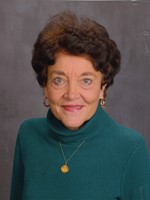

Event Information
I. Introduction and background information to support the creation and implementation of “Innovation and Exploration-Focused Learning Spaces” – helping participants re-focus, to include, but greatly expand from the prevalent and more limited concept of “making” and constructing.
5 minutes
II. Creating a clear vision and establishing goals and objectives, to create effective technology-rich, student-centered learning environments where “inventing”, analyzing, evaluating, and independent inquiry and innovation will thrive.
10 minutes
III. Criteria and recommendations for what to include in “Innovation and Exploration Spaces”, how to best schedule these spaces, and consideration of where best to locate these spaces within a school, to enable educators to reach their instructional and student learning goals and objectives. Discussion will include considerations for how these spaces might be used for after school programs, scheduling when schools employ a hybrid learning model, and how and if, these spaces can be scheduled or used by those learning in remote, virtual, or “home school” learning models. Participants will also actively engage during this time with selected, recommended tools and devices, experiencing a variety of levels of complexity, in which students could engage.
20 minutes
IV. Engaging diverse learners and assuring equitable and accessible opportunities for ALL diverse learners. Successful school implementations will be shared, including implementations from diverse socio-economic locations and urban, rural, and/or suburban areas.
15 minutes
V. Questions and Answers and Wrap Up
10 minutes
Participants will be actively engaged with the presenter with interactive dialogue on key topics and concerns, and participants will be encouraged to engage actively with selected, recommended devices and tools, during the third segment of the session, as described in the outline. Participants will also have time to ask questions and interact with the presenter and other attendees during the Q and A.
www.nic.nkcschools.org
lib.k-state.edu>technology>innovation-lab
coe.k-state.edu>undergraduate>makerspace
cal.lib.k-state.edu>space>116022
https://www.oedb.org/librarian/a-librarians-guide-to-makerspaces
https://wp.nyu.edu/gallatin-schoolfortheearth/modules/makerspace-creation-innovation-ideation/
https://tlos.vt.edu/request/
www.interaction-design.org/literature/article
www.csulb.edu/university-library/innovation-space
https://www.makerspaces.com/what-is-a-makerspace/
“Create a Makerspace for Your School in 5 Easy Steps.”
Concordia University – Portland Blog. July 14, 2018.
“Create a School Makerspace in 3 Simple Steps.” ISTE Blog. August 1, 2019. Nicole Krueger.
”Create Some Space for Ideation Sessions and Design Thinking.” Rikke Dan and Teo Siang.
“Design for the Changing Educational Landscape: Space, Place and the Future Of Learning”. Andrew Harrison and Les Hutton. London: Routledge, 2014.
“Designing a Makerspace for Pre-and In-Service Teachers. Marguerite Koole, Jordan Epp, Kerry Anderson, Robert Hepner and Mohammad Hossain. University of Saskatchewan, Vol 8, 2017.
DigiFeb Kits: Mini Mobile Makespace Design in the Arts Community. Aaron Knochel. International Journal of Designs for Learning, 2017.
“Driving Second Order Change with Technology.” Education Technology Insights. Doug Johnson.
“Educational Change in a Technology-Rich Environment.” Journal of Research on Computing in Education. February 25, 2014. Margaret Riel.
”Equity-Oriented Pedagogical Strategies and Student Learning in After School Making”. Jean Ryoo and Lianna Kali. Emporium, San Francisco.
Gravitating Towards Technology in Education: Place of Makerspace”. Roland Izuagbe. Covenant University, Nigeria, 2017.
“How to Help Kids Innovate From an Early Age.” Digital Promise. July 27, 2018.
“How Makerspaces in Schools Help Students Learn to Code.” Ed Tech Magazine. September 28, 2018. Eli Zimmerman.
Invent to Learn: Making, Tinkering, and Engineering in the Classroom. Martinez, Sylvia Libow and Gary Stager. 2016.
“It’s Time to Remake the Makerspace, But Schools Shouldn’t Go It Alone.” Ed Surge. June 13, 2019. Jessica Hickey.
“Maker Movement Spreads Innovation One Project at a Time”. Sophia Bender and Kylie Peppeler. Phi Delta Kappan, Vol 95, pp 22-27, November 11, 2013.
“Makerspaces and Scientific Creativity Level of Middle School Students”. Global Journal of Arts Education. 2018.
“Makerspaces in the Early Years: A Literature Review”. Marsh, J.; Kumpulainen, K.; Nisha, B.; Velicu, A.; Blum-Ross, A.; Hyatt, D.; Jónsdóttir, S.R.; Levy, R.; Little, S.; Marusteru, G.; Ólafsdóttir, M.E.; Sandvik, K.; Scott, F.; Thestrup, K.; Arnseth, H.C.; Dýrfjörð, K.; Jornet, A.; Kjartansdóttir, S.H.; Pahl, K.; Pétursdóttir, S.; and Thorsteinsson, G. “Makerspaces in the Early Years: A Literature Review.” University of Sheffield: MakEY Project, 2017.
“Making and Makerspaces in Education: Resources for Innovative Learning.” Jessica Parker and Stephanie Chang.
“Making Schools Different: Alternative Approaches to Educating Young People.” Kitty te Riele, Editor. SAGE Publishing, Los Angeles, 2009.
“Opening Up Education: The Collective Advancement of Education Through Open Technology, Open Content, and Open Knowledge.” Toru Liyoshi and M.S. Vijay Kumar; MIT Press, Cambridge, Massachusetts 2008.
“Promoting Positive Technological Development in a Kindergarten Makerspace: A Qualitative Case Study”. Lectito Journals, European Journal of STEM Education, 2018.
Ruben Puenedura – SAMR Model for Higher Order Applications of Technology.
“The Case for School Makerspaces, According to Those Who Use Them.” Erin Gohl.
“Using Edtech Tools to Differentiate Learning.” Edutopia. Katie Noak and Mary E. Pettit. September 24, 2024.
“Why Makerspaces Are the Key to Innovation.” The TECH Edvocate. January 19, 2017. Matthew Lynch.
“Why Your School Needs a Makerspace.” School Leaders Now. June 12, 2018. John Spencer.
